The best sunscreen for cycling: protect yourself on sunny miles
We look at the best sunscreens for riding and explain what you need to look for when buying cycle friendly skin protection
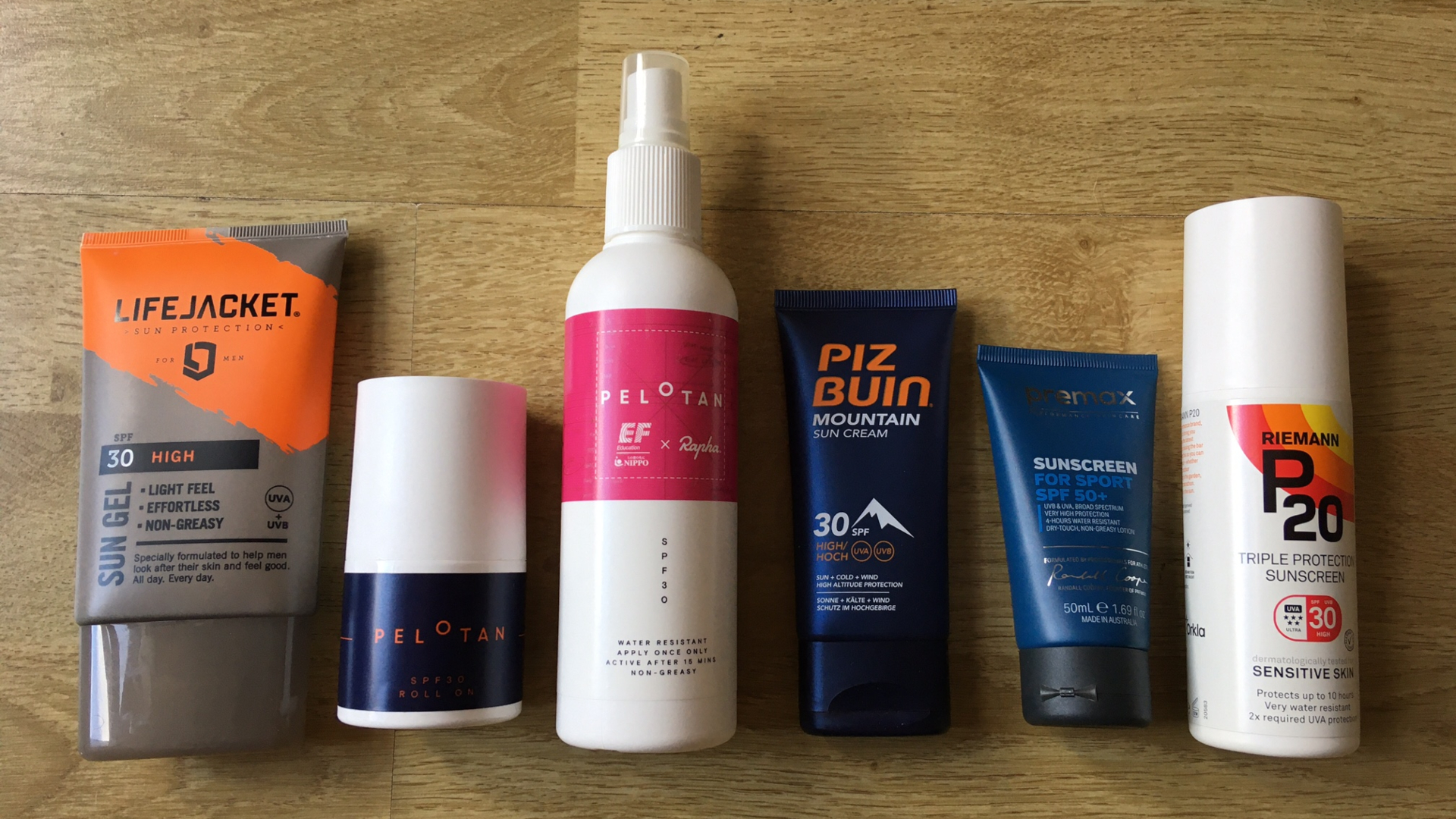
Best sunscreens for cycling
Wherever you live, applying sunscreen before a ride is a sensible idea. Even in the UK, where there are seemingly plenty more overcast days than those featuring bright sunshine, protecting your skin against harmful rays is vital; the UV index can still be strong even if the temperatures suggest otherwise.
Perhaps even more important is remembering to apply plenty of sunscreen if you venture abroad for some winter sun or an early-season training camp. It can be quite a shock spending 6 hours out on your first ride around Mallorca or Tenerife after months of winter.
The best cycling sunscreens will protect you against sunburn, which is certainly painful but can also potentially lead to skin cancer. But they also need to do this without impairing the ride. Look for sweat and water-resistant sunscreens to prevent them ‘washing off’ and worse still, running into your eyes, while at the same time still allowing your skin to breathe and sweat naturally.
A light, easily absorbed sunscreen is also a good idea. After all, no one really wants to undertake a long road ride slathered in enough cream that you look like you’re about to swim the channel.
It’s also worth remembering that no sunscreen offers complete protection against the sun. As well as finding an effective sunscreen you should also look for clothing that can help you cool as well as offer some SPF protection, as many of the best summer cycling jerseys do.
Planning your rides to avoid the time of the day when the sun’s rays are strongest is also a top tip for cycling in hot weather and high UV conditions. This is usually between 11am and 3pm, but if you can’t completely avoid these hours, perhaps plan a lunch stop to give you a break from the sun.
We’ll discuss in more detail what to look for in the best cycling sunscreen but before then here’s our pick of the bunch.
The Quick List
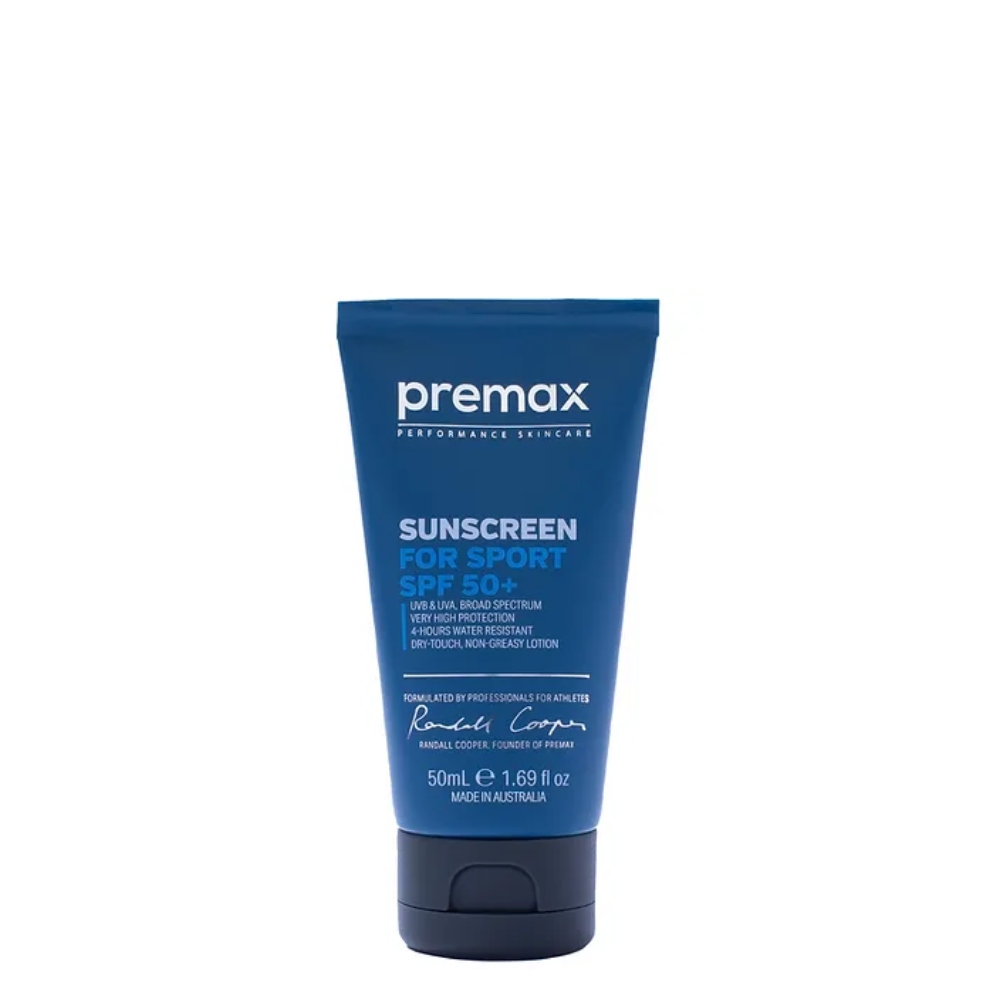
Protects, hydrates and smells good
Premax Sports Sunscreen For Sport offers SPF 50 protection and is available in a convenient 50ml tube. It's non-greasy but hydrates the skin nicely and smells pleasant too but is priced on the high side and needs to be topped up frequently.
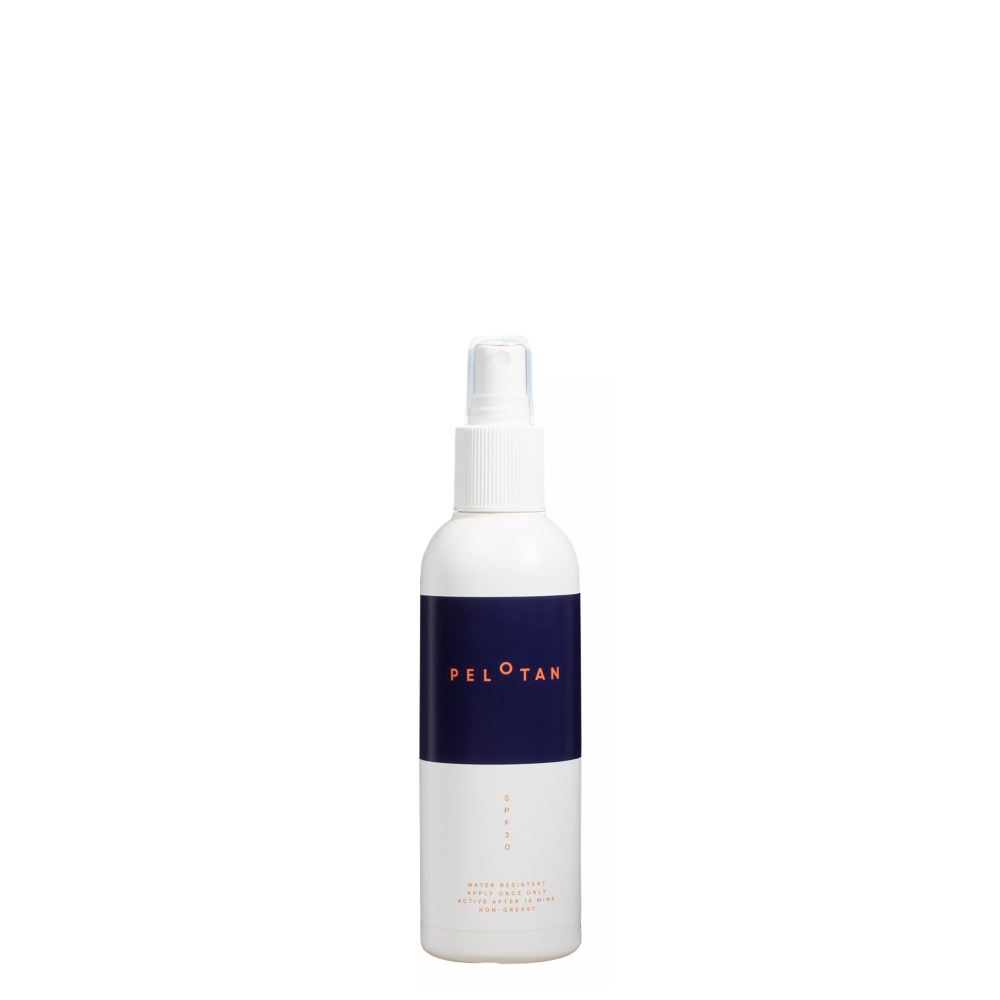
Lightweight formula for long rides
Deals well with sweat and despite being SPF 30 rated it's very lightweight and easily applied. This also means that it absorbs rapidly and is clean to use. Claimed protection time is 8 hours, which should be sufficient for most big days in the saddle.
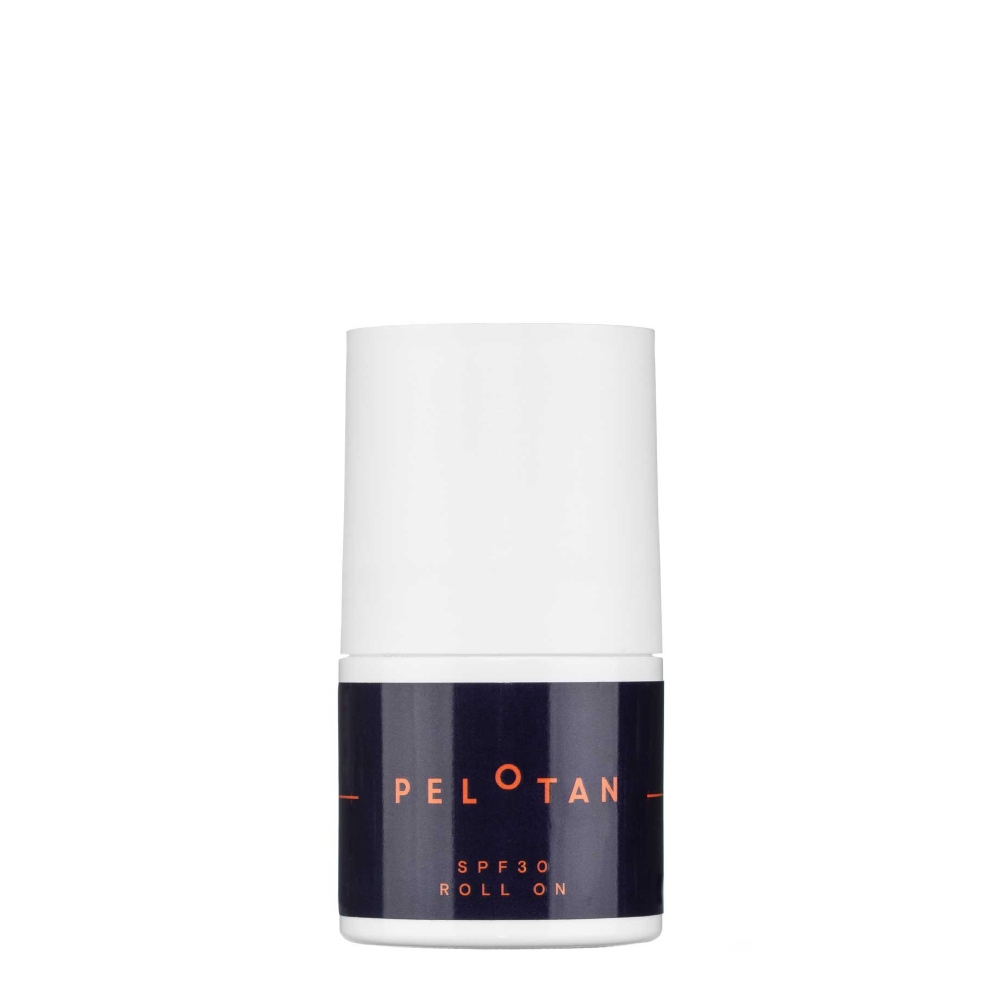
8 hours of protection in an easy-to-use container
Really easy to apply using the deodorant-style roll-on, with quick absorption and great breathability. The flip side is that the clear formula means it's hard to see where the SPF 30 protection has been applied to and which bits you've missed.
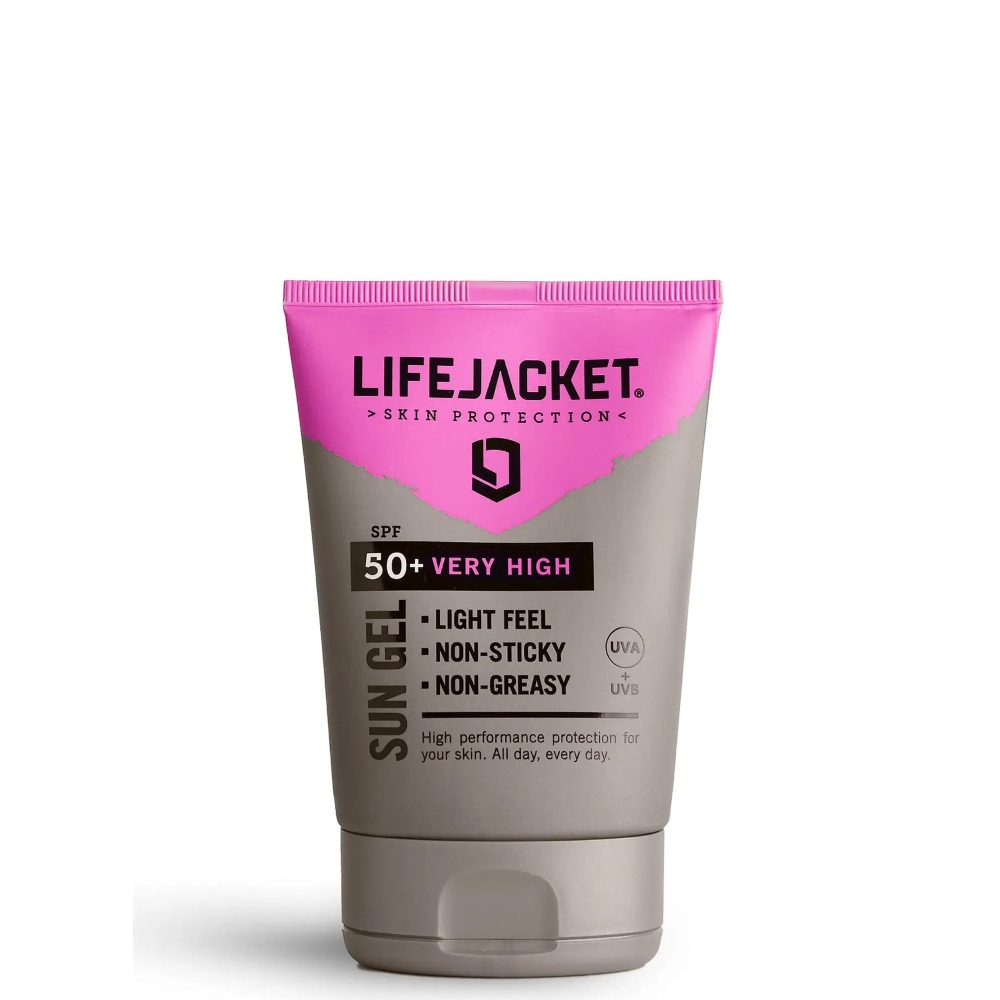
Non-greasy and convenient sachets
Designed for active use, the Sun Gel won't run into your eyes when sweating and the non-greasy SPF 30 formula absorbs quickly when applied. Recommended reapplication time is a rather onerous 2 hours though which means mid-ride top-ups but it is available in pocketable sachets.
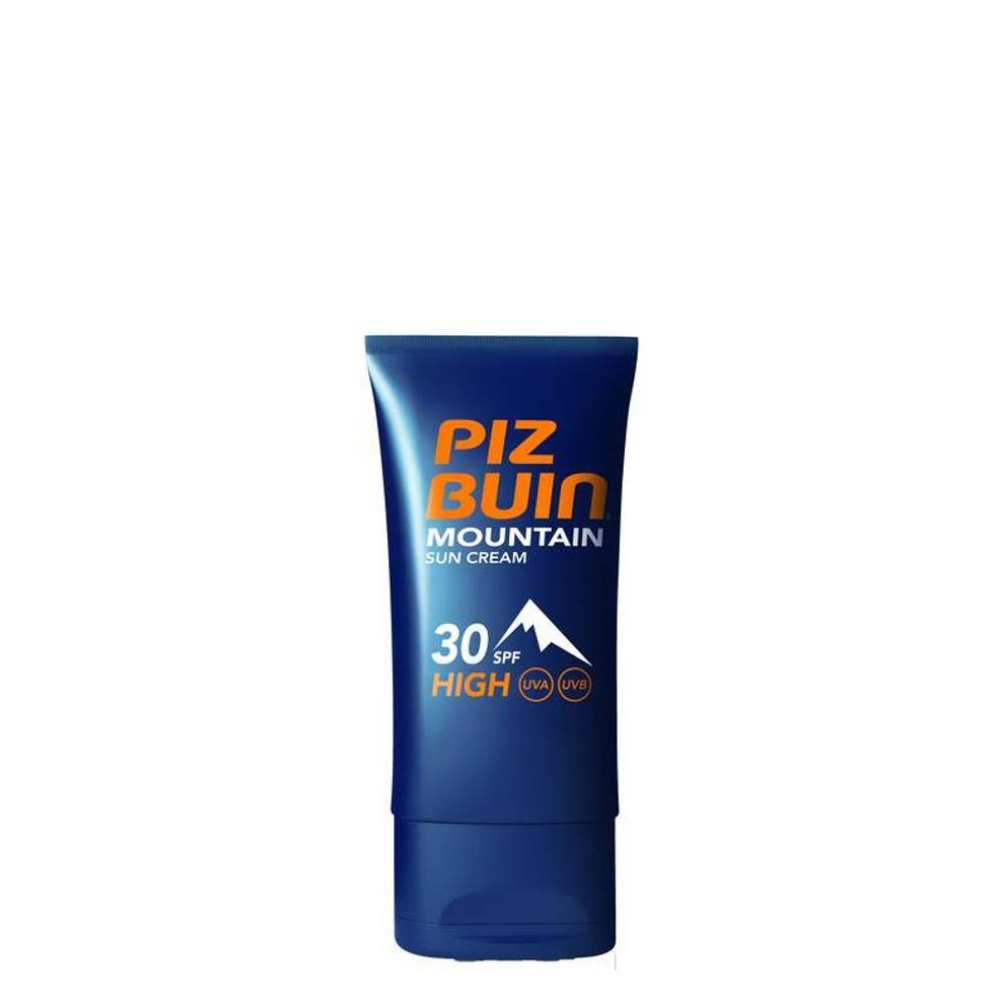
Long-lasting high-altitude protection in an easy-to-carry tube
Perfect for use in the high mountains, Piz Buin is well-known to skiers and mountaineers so should be ideal on the Tourmalet too. Not as light a formula as some on test, but with 10 hours of SPF protection, a pleasant scent and a flattened tube shape that fits in a jersey pocket nicely.
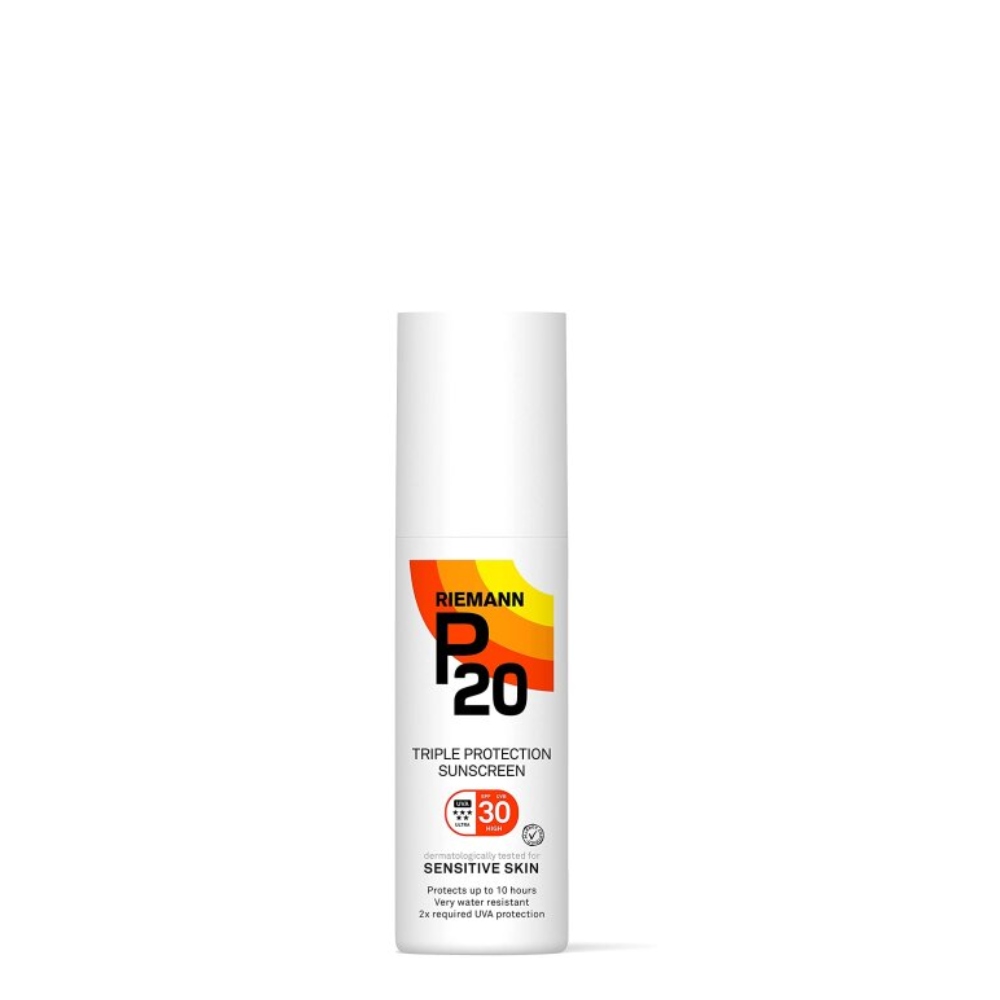
Up to ten hours of protection
Riemann's SPF 30 P20 Sun Cream provides a trifecta of properties that are of interest to a cyclist - durability, sweat resistance and high UVA protection. 10 hours should be plenty for most riders, but the cream is a bit thicker than most and delivery from the pump spray was a bit erratic.
Best Cycling Sunscreens: Our top picks
Protects, hydrates and smells good too
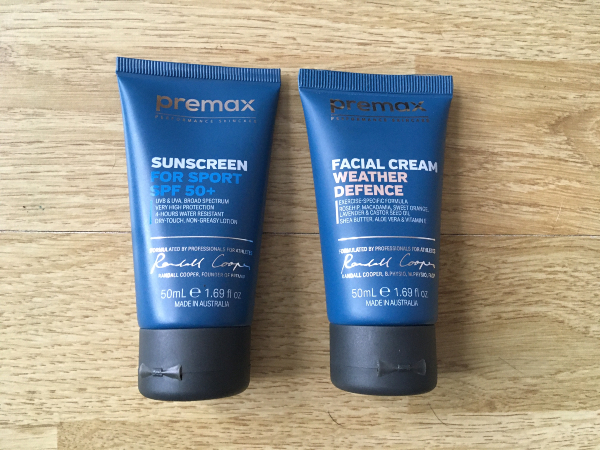
1. Premax Sports Sunscreen For Sport
Our expert review:
Specifications
Reasons to buy
Reasons to avoid
Premax is made in Australia, which given both the intensity of the sun down under and the average Aussie’s propensity for spending as much time as possible outside, inspired plenty of confidence. And its Sunscreen For Sport SPF 50+ didn't let me down.
The cream comes in a small 50ml tube, which is easy to use and also to stash away in a jersey pocket ready for re-application. With an SPF 50+ rating, it’s designed to offer high protection as well as being a broad spectrum sunscreen, meaning it protects against both UVA and UVB rays.
The product itself is lightweight with a pleasant smell, similar to both LifeJacket and Piz Buin in its thickness and a little lighter than the Riemann P20. Like all of the best cycling sunscreens, it's non-greasy and absorbed quickly into my skin. While Premax doesn't claim a ‘protection’ time, preferring to encourage you to reapply frequently, it does state that it's both sweat and water-resistant for up to four hours.
I got on very well indeed with the Premax sunscreen. It prevented sunburn whenever I used it as well as doing a great job of keeping my skin hydrated, probably due to its use of aloe vera and Vitamin E. I also used Premax’s Weather Defence cream, which features shea butter and an array of natural oils, as an additional layer of protection on colder, windy days and the two products together were nothing less than superb.
My face can often dry out in these conditions but the combination of both creams has prevented this each and every time. The Weather Defence cream also benefits from a lovely smell that comfortably rivals the Piz Buin cream in the best scent stakes.
Lightweight formula for long days in the saddle

2. Pelotan SPF 30 spray
Our expert review:
Specifications
Reasons to buy
Reasons to avoid
As the name suggests, Peloton makes sun protection products that are specifically designed for cyclists (including the EF Education WorldTour team).
Its SPF 30 spray uses an alcohol-based formula and is designed to be both lightweight and breathable as well as resistant to sweat and water. Perhaps its biggest selling point for cyclists, or any outdoor athlete, is that it claims to offer up to eight hours of protection. If you’re planning a long ride or are heading for a training camp in the sun this means that you’re unlikely to need to carry the product in your jersey pocket, leaving more space for snacks.
The spray is straightforward to use and allows you to target the required areas without any apparent waste. On the first spray, you can smell the alcohol content but it's quickly masked by a familiar fragrance that wafts in like a summer holiday breeze; it’s either coconut or piña colada depending on your penchant for cocktails.
Being a clear ‘liquid’ formula it’s incredibly lightweight and absorbs almost immediately into your skin - both lighter and faster to absorb than any of the other creams or gels. It’s also mess-free. The only downside to this is that it’s less obvious if you’ve achieved full coverage compared to any of the creams reviewed here.
I was mightily impressed with both Pelotan products. Apart from the lingering smell I soon ‘forgot’ that I’d applied the product due to its almost invisible nature. I was able to sweat as I normally would when cycling without it running or building up as an unwanted layer on my skin. And while I didn’t manage to log eight consecutive hours in the saddle it did protect me for the couple of hours I was out riding. In essence, it's a product that seems entirely suited for its intended use and one I’d favour for long, hot rides.
Eight hours of protection in an easy-to-use container
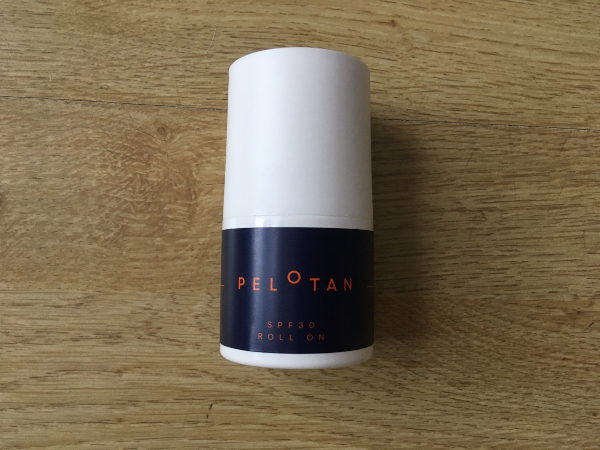
3. Pelotan SPF 30 roll-on
Our expert review:
Specifications
Reasons to buy
Reasons to avoid
Pelotan SPF 30 roll-on uses the same alcohol-based formula as the spray; you get up to eight hours of protection, greatly reducing the need to reapply while riding. Only here it's delivered via a roll-on container that works exactly like an underarm deodorant. Its small size means that it could be carried in a bar bag or similar, should you need to.
I found myself using the roll-on in conjunction with the Pelotan spray, using the former to apply the screen to my nose and ears with precision, while the latter covered larger areas such as my arms and legs. The coconut aroma appeared stronger when using the roll-on but as with the spray, I found it to be a pleasant one.
Again, as with the spray, the clear formula is exceptionally lightweight and absorbs quickly into your skin. Being transparent it's not obvious if you've fully covered the desired area as it is with a cream. That said, the roll-on application gave me a high level of control with my burn-free face after riding suggesting that I'd applied enough and to the right places!
Used alongside the spray or as a standalone sunscreen the Pelotan SPF 30 roll-on is a product that's well-considered and a worthy addition to the UK brand's skin protection range.
Non-greasy, nice smell and offered in sachets

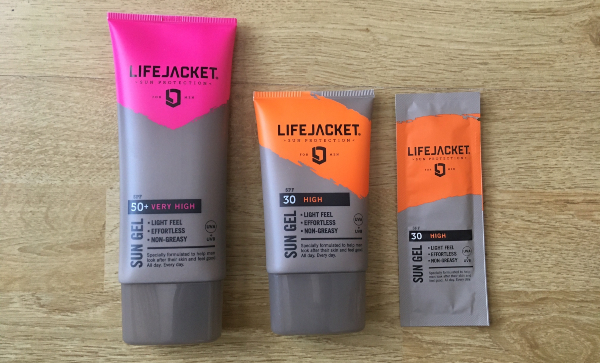
4. LifeJacket Sun Gel
Our expert review:
Specifications
Reasons to buy
Reasons to avoid
LifeJacket was founded by three friends after seeing close, male friends experience cancer at a young age. Understanding that men are almost twice as likely to die from skin cancer than women, they created a skin protection range that’s designed for everyday use, hoping that more men will introduce it into part of their daily skincare routine.
Part of their mission is to provide skin care products that allow people to enjoy the outdoors safely - including cyclists. The Sun Gel is created to be lightweight and non-greasy as well as designed not to run into your eyes. It’s offered with both an SPF 30 (reviewed here) and an SPF 50 level of protection and is also UVA 5* rated, which is the highest possible.
LifeJacket recommends that you apply every two hours. It's important to note here that this is based not on the limitations of the product but rather LifeJacket's commitment to skin safety, with the brand believing that all sunscreens should be re-applied every two hours to best prevent sun damage.
As a cyclist, following these guidelines means you’re likely to need to bring the gel along for the ride. The 100ml tube isn’t too bulky and would fit into a bar bag and even a pocket at a push (I tried and it does fit, although it's a bigger container than I'd ideally want to ride with). The 200ml tube however is probably left at home. LifeJacket also makes handy 10ml portable sachets that are the size of a typical gel, ideally suited for jersey pockets.
As promised, LifeJacket Sun Gel is non-greasy and is quickly absorbed into the skin. It’s also got a pleasant smell, described by the brand as “fresh linen”, which is pretty subtle and not at all over-bearing. I used the recommended ‘dose’ of 1tsp per area of the body, applying it to my face, arms and legs. After a two-hour cycle on a sunny, 20-degree afternoon I was sunburn free. Vitally, like all of the best cycling sunscreens, Sun Gel didn’t run, even after working up a sweat. The combination of its light, non-greasy texture and easy application means I’d happily use the Sun Gel again.
Long-lasting high altitude protection in an easy-to-carry tube
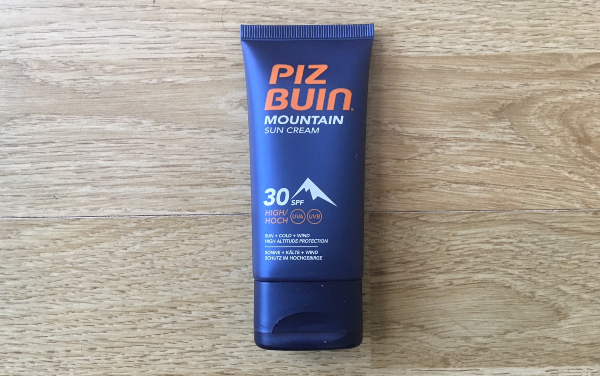
5. Piz Buin Mountain Sun Cream
Our expert review:
Specifications
Reasons to buy
Reasons to avoid
Piz Buin was born in 1948. Its creator Franz Greiter had suffered from sun exposure on the Alpine mountain that gave the company its name, inspiring him to make his first ‘Glacier Cream’.
Its Mountain range is designed for high altitude conditions, making it ideally suited for those summer cycling trips to the Alps and the Pyrenees. The sun cream formulation is created to tackle the double threat of higher-intensity sun rays and cold, dry air that the mountains deliver; in fact, for every 1,000 metres you climb, the sun’s rays grow in strength by as much as 12% while mountain air can decrease skin hydration by up to 13%.
With this in mind, Piz Buin Mountain has created what it describes as an “innovative formulation combining advanced UVA/UVA sun filters and an extract of Edelweiss that helps to protect your skin from the sun and long-term skin damage. To deal with skin dehydration, Piz Buin says the cream has been “enriched with a Cold Shield Complex'', which is said to provide “long-lasting moisturisation.” It’s also designed to be both water and sweat-resistant. Finally, it’s rated SPF 30 but there’s also a 50+ available. The claimed protection time is up to 10 hours, which is the same as Riemann P20.
What this looks and smells like is a non-greasy cream with a clean, fresh scent. I’m not sure if this is the Edelweiss at work here but close your eyes and you can almost smell the crisp Alpine air - for me, it was the best-scented sunscreen on test.
It’s not quite as light as the LifeJacket gel, but it’s easy to apply and quick to absorb. While I don’t have cols to climb near my home, the cream did a stellar job of protecting my skin closer to sea level. As someone who suffers from dry skin Piz Buin’s moisturisation claims held true; my skin did feel as though it had been protected from the sun but also from drying out.
The 50ml tube reviewed here is perfectly sized to fit in a jersey pocket; it’s roughly the dimensions of a gel or small energy bar. Combined with its solid performance and pleasant smell it makes the Piz Buin Mountain sun cream an ideal accompaniment to any high-altitude cycling holiday.
Offers up to ten hours of protection
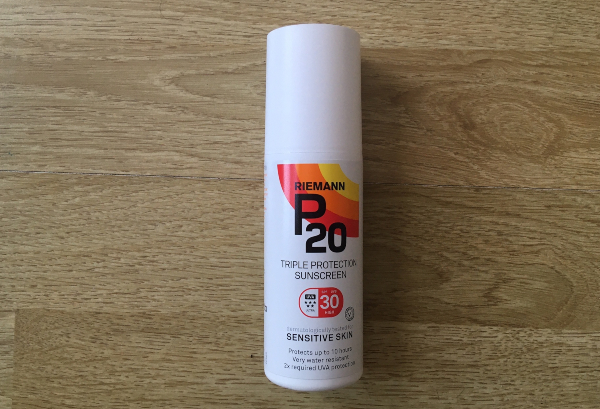
6. Riemann P20 sun cream
Our expert review:
Specifications
Reasons to buy
Reasons to avoid
Riemann P20 was developed in the late 1970s to help protect sensitive skin against the sun. The formula is based on a ‘triple protection’ approach. It’s designed to be long-lasting, durable for up to 10 hours in the sun, highly water-resistant and with high UVA protection. This trio has obvious advantages for cyclists, given that you're likely to be out on the bike for long periods while working up a sweat.
The range consists of lotions, pump spray, creams and continuous spray in SPF15, 20, 30 and 50. We’ve tested the P20 SPF30 cream that’s been dermatologically tested for sensitive skin and is also vegan-friendly.
It’s labeled as fragrance-free, although on application there is a faint smell. However, it’s minimal and seems to disappear once it's been on your skin for a few minutes. Riemann describes the cream as “lightweight’. I’d say it's slightly thicker in texture than the Piz Buin, Premax and LifeJacket sun creams, which may be due to its longer protection time. It’s claimed ten hours is five times greater than LifeJacket’s suggested reapplication time of two hours.
It’s certainly quickly absorbed. I applied a generous amount to my face and arms and within around 10 minutes it felt like it was all soaked in, with no cream left visible. The pump bottle did have a tendency to discharge the cream a little erratically however, with the tube products reviewed here far easier to control.
Once riding, the cream allowed my skin to breathe and sweat, without it becoming messy. Like all the products here I was impressed with the level of protection that the P20 delivered without resorting to a product that was in any way gloopy. Perhaps unsurprisingly I didn’t ride for ten hours straight but after three hours I had no hint of sunburn. My skin also felt hydrated and irritation-free, suggesting that the sensitive skin element of the sunscreen also works well.
Best Cycling Sunscreens: How to choose a sunscreen
What sunscreen is best for cycling?
The best cycling sunscreens should offer plenty of protection against both UVA and UVB rays. These are often referred to as ‘broad spectrum’ on the packaging, tube or bottle.
The Skin Cancer Foundation states that “Ultraviolet A (UVA) has a longer wavelength, and is associated with skin ageing” while “Ultraviolet B (UVB) has a shorter wavelength and is associated with skin burning.” Look for sunscreen that has a UVA rating of four or five stars, according to the NHS guidelines.
You’ll also want sunscreen that’s resistant to water or sweat. There isn’t a rating for this so you’ll need to rely on the manufacturer's claims, Riemann P20, for example, describes its suncream as “very water resistant". If you’re riding for a few hours or have been sweating heavily, it’s advisable to reapply the sunscreen regardless of its claims.
A lightweight sunscreen is recommended too. Not only does it absorb quickly into your skin it also allows it to breathe and sweat naturally, helping your body to better regulate its temperature.
Whether you opt for a cream, spray or roll-on is really down to personal preference. We’d advise trying a few products out to see which suits you best, especially if you have sensitive skin.
Another factor worth considering is the container itself. Unless you’re planning on a ride of a couple of hours or under it’s likely you’re going to need to take the sunscreen with you ready for re-application. Look for tubes that fit easily in a jersey pocket or bar bag. Some brands, such as LifeJacket, also make small sachets which are no bigger than the size of an energy gel.
What SPF is best for cyclists?
The Skin Cancer Foundation states that the “SPF number tells you how long the sun’s UV radiation would take to redden your skin when using the product exactly as directed versus the amount of time without any sunscreen.”
This means that a sunscreen labelled SPF 30 will protect you from burning thirty times longer than if you were wearing no sunscreen at all.
It’s worth considering that very high SPF sunscreens - SPF 50 or over - do offer better protection against UVB rays. According to the Skin Cancer Foundation, SPF 30 sunscreen will allow about 3% of the UVB through while an SPF 50 product reduces this to about 2%.
There is an argument that higher SPF products offer users a false sense of security, which can lead them to not reapply the sunscreen frequently enough. Whether you’re using SPF 15, 30, 50 or higher, ensure you follow the instructions on how to apply the sunscreen and when you need to re-apply it.
How can I protect my face from the sun when cycling?
As well as applying sunscreen it’s advisable to wear one of the best cycling caps to protect your head against sunburn. There are a multitude of designs to choose from but the majority should fit comfortably underneath a helmet, with a small visor that helps shield the eyes.
Sunglasses are another sensible option, helping to protect your eyes against the sun’s harmful rays as well as doing a stellar job of keeping debris and insects at bay.
Other precautions against the sun can include a bandana worn to protect the back of your neck, an area of the body that’s often left exposed during a long day in the saddle.
How we test
Protecting cyclists is quite a hard task for a sun cream - we spend hours sat in essentially the same position exposing certain areas of skin to the sun's harsh rays and it's not as if we can just roll over on the sunbed to do the backs of our legs. On top of this, we sweat a lot and we need clear vision to see where we are going. Therefore these sunscreens were tested for the protection that they provided, the ease of application and how well they stayed put without mingling with sweat and stinging the eyes. On longer rides it's also important to reapply, so packaging and pocketability were considered by the testers.
Get The Leadout Newsletter
The latest race content, interviews, features, reviews and expert buying guides, direct to your inbox!
Luke Friend has worked as a writer, editor and copywriter for twenty five years. Across books, magazines and websites, he's covered a broad range of topics for a range of clients including Major League Baseball, the National Trust and the NHS. He has an MA in Professional Writing from Falmouth University and is a qualified bicycle mechanic. He has been a cycling enthusiast from an early age, partly due to watching the Tour de France on TV. He's a keen follower of bike racing to this day as well as a regular road and gravel rider.
-
 Positive signs for UK bike industry as Halfords cycling sales grow
Positive signs for UK bike industry as Halfords cycling sales growRetailer admits that the impact of Donald Trump's tariffs remains to be seen
By Tom Thewlis
-
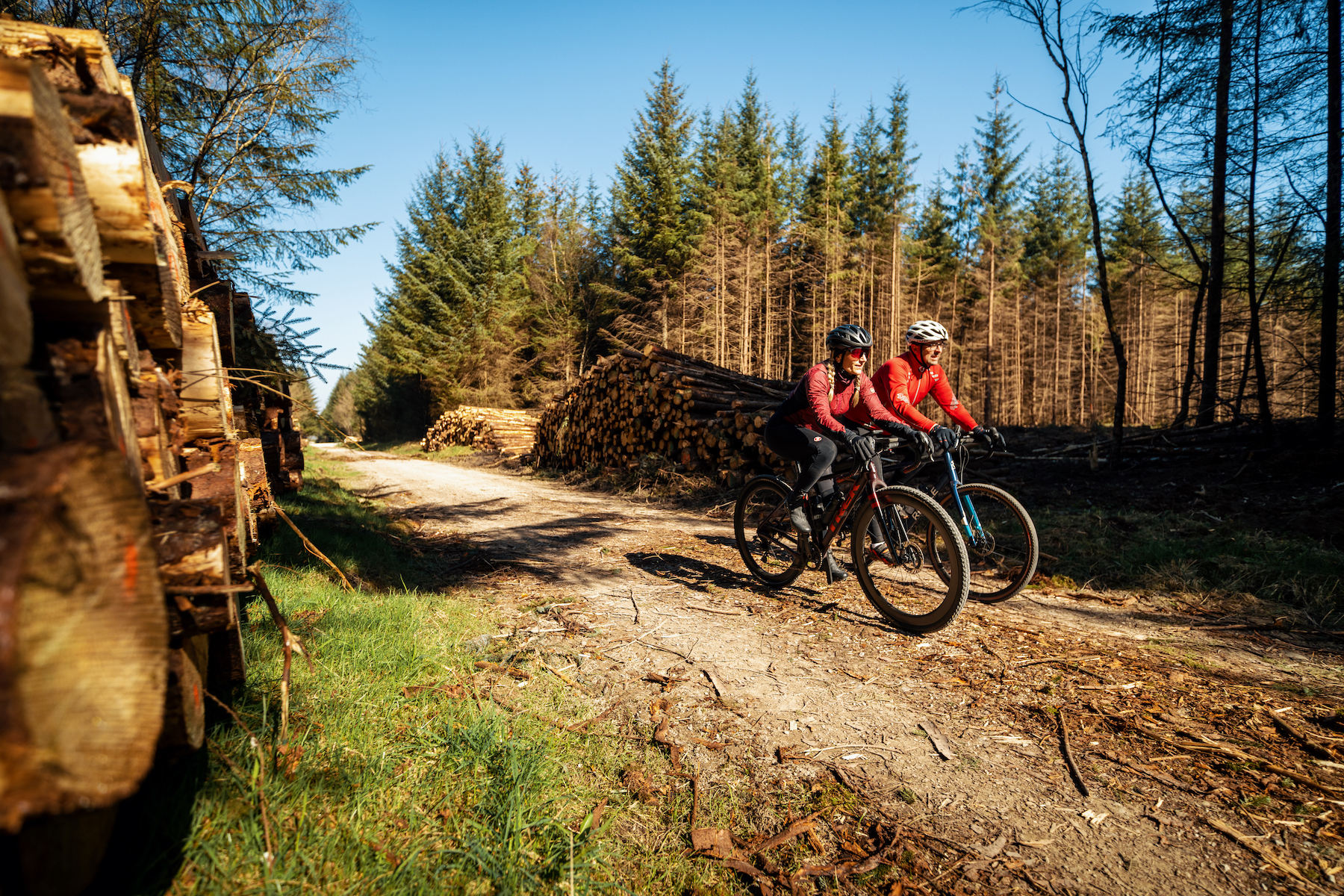 'We don't own gravel - it's a community thing': the spirit of gravel is safe, say British Gravel Championship organisers
'We don't own gravel - it's a community thing': the spirit of gravel is safe, say British Gravel Championship organisersCycling Weekly travels to Dalby Forest to ride the championship course and find out where we go from here
By James Shrubsall